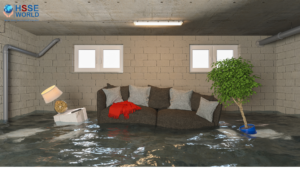E-Books:The Fire Prevention Handbook for Home safety
3 min readA fire can start very easily and can spread with frightening speed. Every year there are more than 68,000 fires in people’s homes, resulting in 400 deaths and 13,800 injuries. This handbook is your essential DIY guide to fire safety. If you follow the sensible advice and suggestions in it, you will significantly reduce the chance of there being a fire in your home. And if there ever is a fire, you’ll know how to get everyone out safely. A lot of the advice is common sense and will only take a few minutes of your time to put into action. With this guide there is a separate room-by-room checklist which will:
• help you to identify any potential danger in your home that could cause a fire; and
• refer you to the relevant page in this guide for advice on how to reduce the risk.
If you have any questions which aren’t answered in this guide, contact your local Fire and Rescue Service (fire station) for advice[cm_tooltip_parse][/cm_tooltip_parse]
This handbook’s practical and clear-cut advice will help you greatly reduce the chances of a fire happening in your home. If you have a fire, it explains how to get everyone out quickly and safely.
Remember
if you do have a fire – however small – get everyone out of the building and dial fire Station or local Authority for the Fire and Rescue Service.Prevention
This section explains how you can reduce the chances of having a fire in your home by taking common-sense precautions. Use the checklist at the front of this guide and inspect every room in your home for possible dangers.
Safety in the kitchen
Most fires in homes start in the kitchen as a result of people being careless with appliances or being distracted for a moment while cooking. Nearly 20 people a day are killed or injured in kitchen fires.
Cooking
• When cooking, take care if you’re wearing loose clothing as it can easily catch fire. Keep electrical leads, tea towels and cloths away from the cooker and hob.
• Never leave children alone in the kitchen. Keep matches, lighters and saucepan handles where children can’t reach them, and fit a safety catch on the oven door.
• Keep the oven, hob, toaster and grill clean a build-up of fat, crumbs or grease can easily catch fire.
• Don’t use matches or lighters to light gas cookers spark devices, which you can buy from hardware stores, are safer
• Don’t leave pans on the hob when you’re not around. Take them off the heat if you have to leave the kitchen.
• Angle saucepan handles so they don’t stick out from the hob, or over a naked flame.
• Don’t put anything that is made of metal or is metallic inside the microwave.
• When you have finished cooking, make sure you switch off the oven and hob.
Looking after the electrics
• Keep electrical leads and appliances away from water.
• Turn off electrical appliances when they’re not being used and service them regularly.
• Check that the toaster is clean, and empty the crumbs regularly. Make sure it’s not near curtains, blinds and kitchen rolls.
• Don’t overload electrical sockets. Only have one plug in each socket. If you need more plugs than there are sockets, use a ‘bar type’ fuse adaptor and keep the total amps of all plugs in the adaptor to 13 amps or less. Also, remember that higher-amp appliances such as washing machines always need a socket to themselves.

Contents
Introduction
Prevention
Detection
Escape
Children
Contacts




